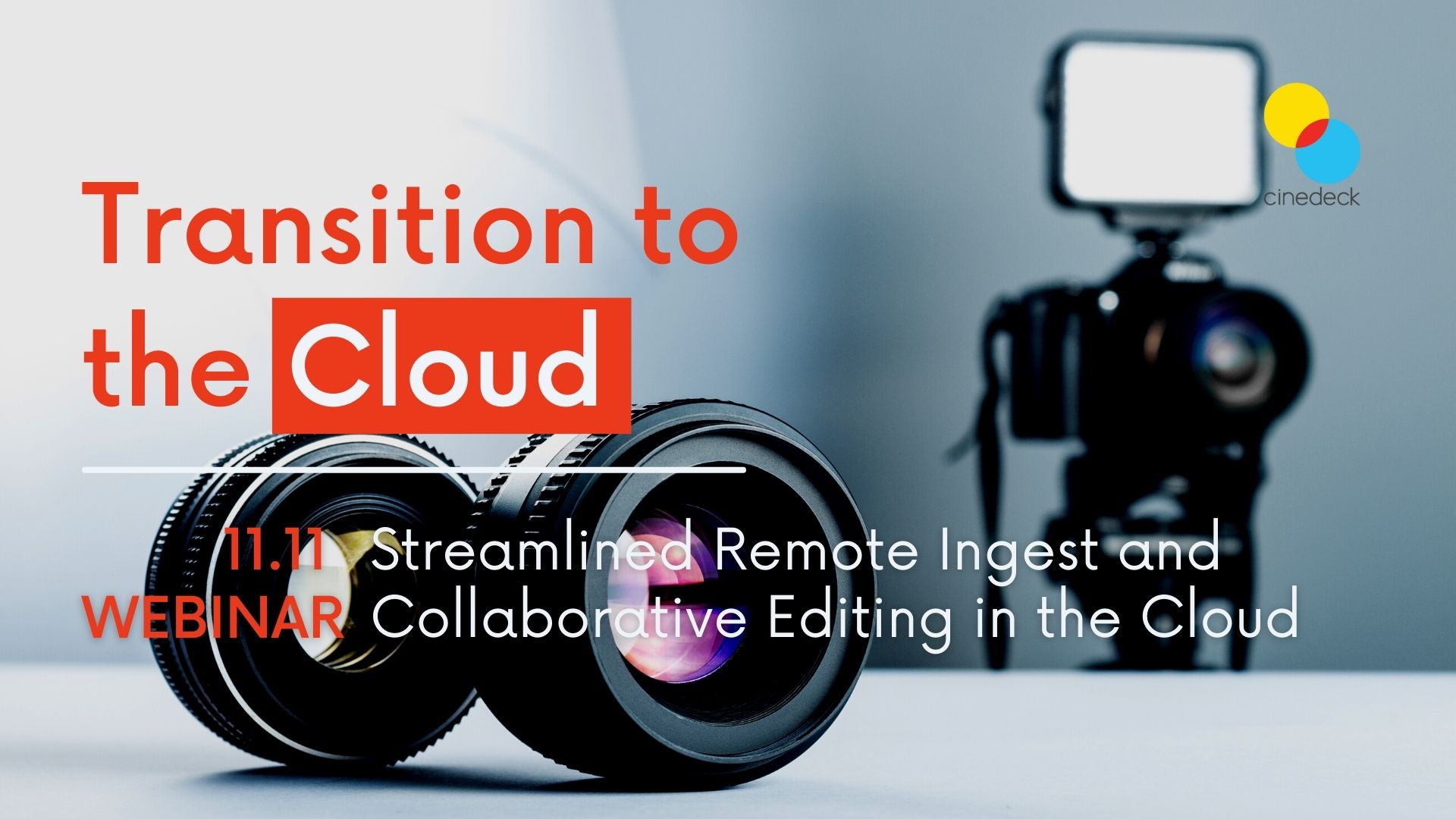Streamlined Remote Ingest and Collaborative Editing in the Cloud
On 11th November we will be joining Tyrell, EditShare, FileCatalyst, and Haivision, to talk about how media companies can manage growing files in collaborative cloud media storage.
In our recent blog post we explored how cloud recording is revolutionizing remote pro
duction. That trend can be seen throughout remote production, with broadcasters looking to get more of the workflow into the cloud. Of course, remote production is an area where cloud workflows can really make a difference, helping to reduce the amount of people and hardware needed on site. This is particularly useful for live events where time on site may be limited.
With more and more workflows becoming cloud-based, is the future of production fully remote?
Barriers to Cloud
Until recently, remote production still involved using a lot of on-site hardware, often large teams, and all the associated costs. The transition to the cloud has seemed daunting for many for a number of reasons. One of the biggest barriers is simply the apparent huge undertaking of transitioning all of those workflows into a cloud-based environment. At the same time, broadcasters and content producers are of course concerned with ensuring the right content gets to the right people at the right time, and doesn’t get into the wrong hands. There is often a mindset that cloud-based means less security and more reliance on high-speed internet to keep that content safe and flowing when needed.
If the pandemic has taught us anything it is that the common misconceptions around cloud media workflows are unfounded. The technology has existed for some time to make cloud-based processes work throughout the media production chain, without sacrificing on quality and security. Understanding those tools and adapting to new workflows is probably the biggest barrier that remains.
Transition to Cloud
In our recent blog post, we explored the long term impact that COVID will have on media production. It has certainly accelerated adoption but it seems likely that many of those cloud-based tools are here to stay. As we highlighted, Rethink Technology Research estimates that cloud-based video production costs will more than triple from $602 million in 2020 to $2.48 billion in 2026.
In the initial stages of the pandemic, many media companies moved to cloud-based workflows out of necessity. The priority was moving processes to the cloud that needed to be there, to enable remote editing while staff were working from home, for example. As we began settling into a new way of working, and those companies began to see the benefits of those cloud workflows, the media industry began exploring other cloud-based processes that would further improve efficiencies. That transition is likely to continue in the coming months.
Why Fully Remote Production Makes Sense
There are times when having infrastructure and staff on site may still make sense, especially for more permanent production sites, for example. In the live events landscape in particular, being able to spin up, and down, cloud instances, has a huge impact on costs, resources, and efficiencies. Being able to pay for what you use is particularly attractive as live event schedules can often change at the last minute.
Furthermore, having a managed service for end-to-end cloud production means that you can focus on your event or production, rather than having to deal with the logistics of capturing and moving media. It seems likely that fully remote production will become more commonplace, especially for live events. In order to maximize the benefits it brings, broadcasters and production companies need to ensure they are setup for that transition.
Watch the Webinar
If you are exploring a fully remote production workflow, join the webinar where we will explore:
- How to ingest directly to cloud storage for remote editing
- The management of both assets and editing on shared storage in the cloud
- The value of event-based cloud architecture on a production
Hosted by Tyrell, it features a coalition of solution providers who know just how critical your live productions are.

